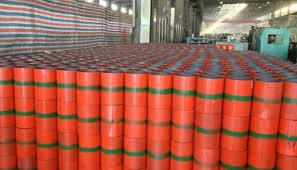- Afrikaans
- Albanian
- Amharic
- Arabic
- Armenian
- Azerbaijani
- Basque
- Belarusian
- Bengali
- Bosnian
- Bulgarian
- Catalan
- Cebuano
- Corsican
- Croatian
- Czech
- Danish
- Dutch
- English
- Esperanto
- Estonian
- Finnish
- French
- Frisian
- Galician
- Georgian
- German
- Greek
- Gujarati
- Haitian Creole
- hausa
- hawaiian
- Hebrew
- Hindi
- Miao
- Hungarian
- Icelandic
- igbo
- Indonesian
- irish
- Italian
- Japanese
- Javanese
- Kannada
- kazakh
- Khmer
- Rwandese
- Korean
- Kurdish
- Kyrgyz
- Lao
- Latin
- Latvian
- Lithuanian
- Luxembourgish
- Macedonian
- Malgashi
- Malay
- Malayalam
- Maltese
- Maori
- Marathi
- Mongolian
- Myanmar
- Nepali
- Norwegian
- Norwegian
- Occitan
- Pashto
- Persian
- Polish
- Portuguese
- Punjabi
- Romanian
- Russian
- Samoan
- Scottish Gaelic
- Serbian
- Sesotho
- Shona
- Sindhi
- Sinhala
- Slovak
- Slovenian
- Somali
- Spanish
- Sundanese
- Swahili
- Swedish
- Tagalog
- Tajik
- Tamil
- Tatar
- Telugu
- Thai
- Turkish
- Turkmen
- Ukrainian
- Urdu
- Uighur
- Uzbek
- Vietnamese
- Welsh
- Bantu
- Yiddish
- Yoruba
- Zulu
what are the differences between casing and tubing?
Understanding the Differences Between Casing and Tubing in Oil and Gas Drilling
In the oil and gas industry, the terms casing and tubing are frequently used when discussing the drilling process and the infrastructure required to safely extract hydrocarbons from the earth. Although both terms relate to the pipes used in drilling operations, they serve distinct purposes and have different structural characteristics. Understanding these differences is essential for anyone involved in oil and gas production, from engineers to investors.
Understanding the Differences Between Casing and Tubing in Oil and Gas Drilling
On the other hand, tubing is a smaller-diameter pipe that is inserted inside the casing after the well has been drilled and cased. Tubing is specifically designed to carry oil, gas, or other fluids from the reservoir to the surface. Unlike casing, which is meant to provide structural support and isolation, tubing is focused on the flow of hydrocarbons. It is easier to install and replace than casing and generally has a lighter weight, allowing for greater flexibility during operation. Additionally, tubing can be equipped with various completion tools, such as pumps and valves, to optimize production.
what are the differences between casing and tubing?

One of the primary differences between casing and tubing is their function in the drilling process. Casing serves to protect the wellbore and secure the integrity of the well, while tubing is dedicated to the flow of oil and gas to the surface. This distinction highlights the complementary roles these two elements play in the overall drilling and production process.
Another difference lies in their installation and maintenance. Casing is installed during the drilling phase and is cemented in place, often remaining in the well for its entire lifespan. In contrast, tubing can be adjusted or replaced as needed to accommodate changing production conditions. This flexibility can be beneficial as it allows operators to adapt to changes in pressure, flow rates, and the characteristics of the reservoir.
Moreover, the materials used for casing and tubing can differ. Casing is typically made from carbon steel or other robust materials designed to withstand high pressures and environmental stresses. Tubing, while also made from durable materials, may be manufactured with considerations for what fluids it will transport, affecting its thickness and composition.
In summary, while casing and tubing are both essential components in oil and gas drilling, they serve different purposes and have distinct characteristics. Understanding these differences is critical for ensuring the effective and safe extraction of hydrocarbons. As technology continues to advance, the methods used to install and manage casing and tubing will evolve, but their fundamental roles in the drilling process will remain integral to the industry. This understanding is vital for all stakeholders involved in oil and gas operations, highlighting the complex engineering required to tap into natural resources safely.
-
Tubing Pup Joints: Essential Components for Oil and Gas OperationsNewsJul.10,2025
-
Pup Joints: Essential Components for Reliable Drilling OperationsNewsJul.10,2025
-
Pipe Couplings: Connecting Your World EfficientlyNewsJul.10,2025
-
Mastering Oilfield Operations with Quality Tubing and CasingNewsJul.10,2025
-
High-Quality Casing Couplings for Every NeedNewsJul.10,2025
-
Boost Your Drilling Efficiency with Premium Crossover Tools & Seating NipplesNewsJul.10,2025







